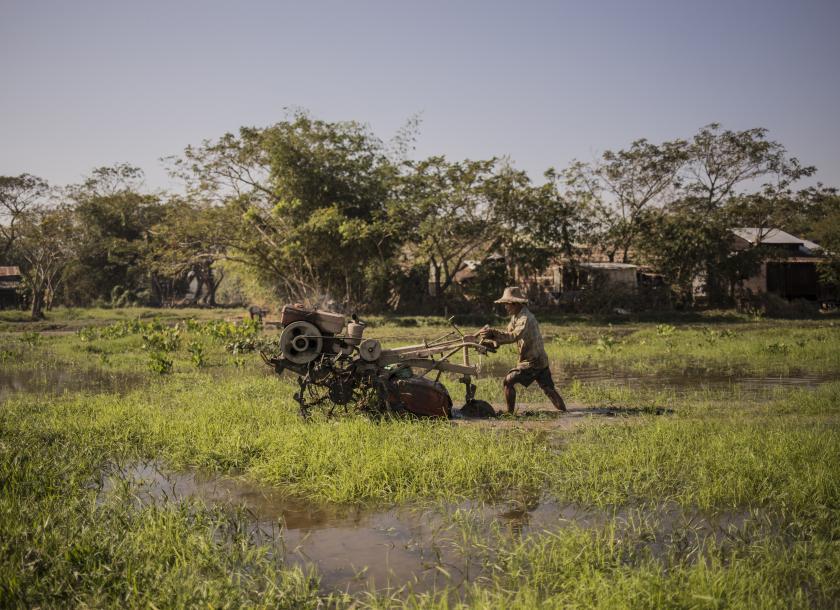Microfinance institutions (MFIs) in Myanmar will face COVID – 19 cash flow crisis
1 Jun 2020
Travel restrictions, government orders to defer repayments and lend at lower interest rates have reduced the ability of microfinance institutions (MFIs) in Myanmar to operate at a time when there is a pressing need for capital from the rural population due to COVID-19.
The inability to collect repayments from some borrowers has led to road bumps in liquidity and cash flows for MFIs, and this, in turn, has limited the lenders' capacity to extend financing to others.
Compared to the same period in 2019, the multi-donor Livelihood and Food Security Fund (LIFT) has seen a US$115 million shortfall in liquidity among MFIs it worked with last month, and this is expected to rise by another $60 million during the first half of May as COVID-19 restrictions persist.
MFIs working with LIFT disbursed around $1.2 billion in loans to more than 2.8 million low-income households last year, but some have seen reductions of more than 60 percent in planned disbursements this year as a result of COVID-19.
Since Myanmar enacted the Microfinance Law in 2011, lending by MFIs has become the biggest source of financing for the rural economy. There are almost 200 licenced MFIs, serving an estimated 5.5 million clients in Myanmar.
But restrictions meted out to prevent the spread of COVID-19 have made it difficult for MFIs to disburse loans and collect payments. One reason is because most MFIs do so via local agents.
The MFI industry, in general, has a high repayment rate of over 99pc, said Rachel Yu, development director of VisionFund Myanmar. But when the US-based MFI reopened for business on May 4, it only received 19pc of expected repayments, which had impact on their cash flow.
At the same time, there has been a “liquidity crunch” internationally with banks and lenders affected, reducing cash available to where it is needed, she added.
Interest rate changes
That's not all. The Central Bank of Myanmar's (CBM) move to slash unsecured lending rate from 16 to 14.5 pc, or by 1.5pc last month, have had an unintended consequence of constraining capital flow to the MFIs.
Myanmar’s microfinance providers require access to larger pools of international funds in order to expand and meet the needs of the local population. To hedge against the volatility of the kyat, LIFT has partnered with Currency Exchange Fund (TCX) to provide a hedging service enabling foreign investors to lend in the local currency to Myanmar’s microfinance sector.
To help the local MFIs service the high-interest rates required to access international financing, LIFT provides funds to subsidise the interest rate levels of these local currency loans, bringing them down to the level of the stipulated interest rate.
With interest rates in Myanmar now lowered though, that access is now at risk. Because a substantial amount of funds would have to be reallocated to make up for the 1.5pc difference in interest payment, the available funds that could be channelled to those in need from LIFT shrink.
“The lower the interest rate, the more the cost of our subsidy, which means the less money we can bring in,” said Curtis Slover, LIFT’s head of financial inclusion and private sector programme.
“Those two factors - the interest rate as well as the exchange rate volatility - have really cut the amount that we can leverage against LIFT money,” Mr Slover added. LIFT has signed off around $18 million since COVID-19, and is now negotiating for another $23 million.
Keeping MFIs solvent
The government’s COVID-19 Economic Relief Plan, announced in late April, seeks to “ensure MFIs have full access to low-cost funding” but practical plans have yet to be implemented.
With the uncertainty over the next months, MFIs have urged the authorities to speed up approvals on MFI investment and borrowing applications and changes.
U Soe Htike Lwin, head of business operations at Proximity Finance, the microfinance arm of Yangon-based Proximity Designs, suggests that the government relax key ratio requirements, such as the debt-to-equity ratio, and temporarily eliminate required approvals on changes to conditions of loans for existing borrowings to ease the pressure on local MFIs.
The priority is to provide financial access to rural communities. Proximity Finance plans to support approximately 45,000 farmers with K19.8 billion ($14 million) in loans in May.
“We know this only touches a small part of the rural community, so we encourage other MFIs to join in supporting more farming households,” said U Soe Htike Lwin.
He noted it is imperative for MFIs to have close oversight of cash flows to maintain solvency for now.
“The microfinance sector can ill afford further operational restrictions and our continued operation is critical in ensuring we can support the economy and our clients to navigate their way through the crisis,” U Soe Htike Lwin said.
(The Myanmar Times: https://www.mmtimes.com/news/microfinance-institutions-myanmar-face-covid-19-cash-flow-crisis.html )











